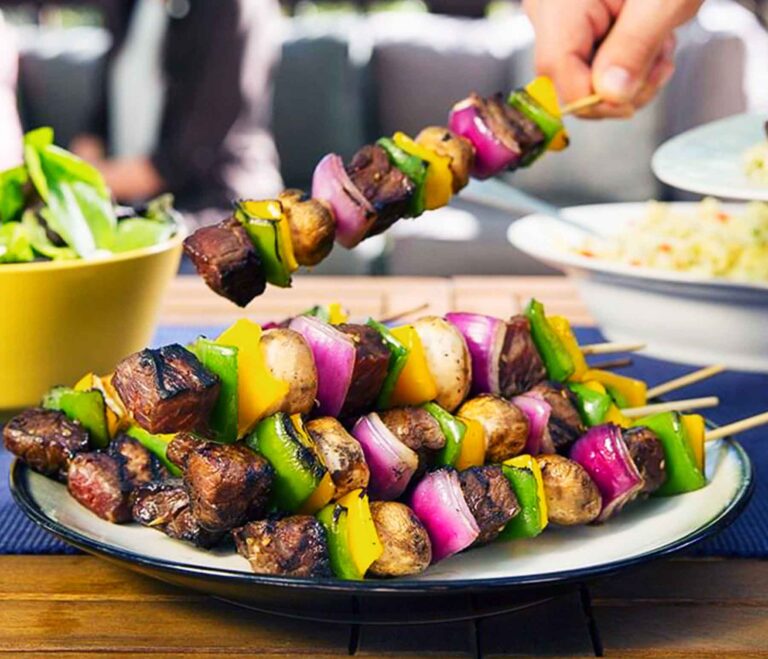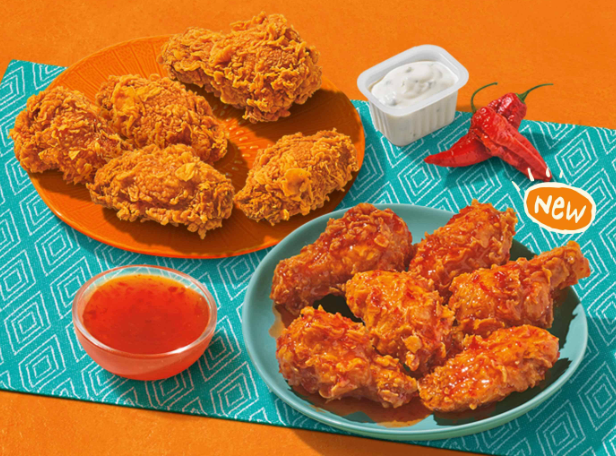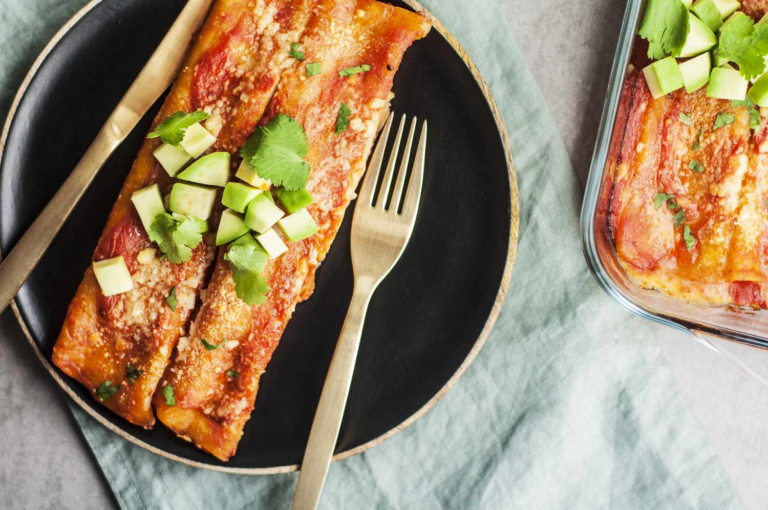10 Must-Try Traditional Turkish Foods: A Culinary Adventure
Turkey, a land where East meets West, boasts a rich culinary heritage that reflects its diverse cultural influences spanning centuries. From succulent kebabs to mouthwatering desserts, Turkish cuisine offers a tantalizing array of flavors and textures that are sure to delight any palate.
This Article Delves Into the intricate tapestry of tastes and culinary practices that make Turkish food not just a mere act of sustenance, but a vibrant celebration of culture and tradition.
Let’s Begin by Discussing the 10 must-try traditional Turkish foods that should be on your culinary bucket list. Whether you’re a seasoned foodie or an adventurous eater, these dishes will transport you to the heart of Turkey’s gastronomic excellence.List is given below:-
1. Kebabs (Kebap):
The kebab is a quintessential element of Turkish gastronomy, a symbol of the culinary fusion that characterizes the nation’s food. Here are some points to expand on the significance and variety of kebabs in Turkish cuisine:
- Historical Significance: The kebab has a storied history in Turkey, with roots that can be traced back to the soldiers of the Ottoman Empire who used their swords to grill meat over open field fires.
- Cultural Variety: Each region in Turkey offers its own take on the kebab, reflecting the local tastes and traditions. This has resulted in a rich diversity of kebabs across the country.
- Adana Kebab: Originating from the city of Adana, this kebab is known for its spicy flavor and is made from hand-minced meat mixed with chili on a long, metal skewer.
- Shish Kebab: A classic variety, shish kebab consists of chunks of marinated meat grilled on a skewer, often accompanied by vegetables like bell peppers and onions.
- Iskender Kebab: Another beloved variant, Iskender kebab features thinly sliced lamb, served over pieces of pita bread, generously topped with yogurt and tomato sauce.
- Döner Kebab: Perhaps one of the most internationally recognized forms, the döner kebab is made of meat cooked on a vertical rotisserie, typically served wrapped in bread with salad and sauces.
- Preparation Techniques: The preparation of kebabs involves marinating the meat in a mixture of spices and herbs, which not only tenderizes the meat but also infuses it with rich, complex flavors.
- Community and Sharing: Kebabs are more than just food; they are a means of bringing people together. In Turkey, sharing a kebab meal is a communal experience, often enjoyed at gatherings and celebrations.
You can enjoy kebabs at the best Turkish restaurant in Kitchener Whether served on a plate, in a wrap, or on a skewer, kebabs exemplify Turkey’s culinary creativity and its knack for transforming simple ingredients into a sensory delight.
2. Meze:
A delightful assortment of small dishes served as appetizers, meze is an integral part of Turkish dining culture. Sample classics like hummus, ezme (spicy tomato dip), and cacık (yogurt and cucumber dip) for a taste of authentic Turkish flavors.Here are some points about meze, the delightful assortment of small dishes that play an integral role in Turkish dining culture:
- Variety and Abundance: Meze is all about variety. When you order a meze platter, you’ll be treated to an abundant selection of small dishes, each with its own distinct flavor profile. From olives and cheeses to grilled vegetables and seafood, meze offers something for everyone.
- Social Sharing: Meze is meant to be shared. It’s a communal experience where friends and family gather around the table, savoring these flavorful bites together. The act of passing plates and sampling different meze fosters a sense of togetherness and conviviality.
- Balance of Flavors: Meze strikes a harmonious balance between savory, tangy, and fresh flavors. For example:
- Hummus: Creamy and earthy, hummus is made from mashed chickpeas, tahini, garlic, and lemon juice. It’s often drizzled with olive oil and sprinkled with paprika.
- Ezme: This spicy tomato dip combines finely chopped tomatoes, peppers, onions, parsley, and spices. It’s vibrant, zesty, and pairs wonderfully with bread.
- Cacık: A refreshing yogurt and cucumber dip, cacık is seasoned with dill, garlic, and mint. It cools the palate and complements grilled meats.
3. Köfte:
Köfte, the savory meatballs seasoned with a blend of spices, are a cornerstone of Turkey’s food culture. Here’s an expanded look at this beloved dish:
- Versatile Delight:
- Köfte is incredibly versatile. It can be shaped into balls, patties, or even wrapped around skewers.
- The preparation methods vary widely, from grilling and frying to stewing in a rich tomato sauce, each method imparting a unique flavor and texture.
- Blend of Spices:
- The secret to köfte’s irresistible taste lies in the spices. A mixture of cumin, paprika, mint, and more are combined with the ground meat—often lamb, beef, or a mix of both.
- These spices are not just about adding flavor; they’re a nod to Turkey’s position as a crossroads of the spice trade, reflecting the country’s rich culinary history.
- Cultural Staple:
- Köfte is more than just food; it’s a cultural icon. Found in nearly every Turkish restaurant and home, it’s a dish that brings people together.
- Whether it’s a quick bite from a street vendor or a family meal at home, köfte is a symbol of Turkish hospitality and the nation’s love for good, hearty food.
4. Baklava:
A heavenly pastry made of layers of thin dough, butter, and chopped nuts, sweetened with syrup or honey, baklava is a quintessential Turkish dessert. Indulge in this decadent treat and savor the delicate balance of sweetness and crunch.Lets discuss more about the heavenly Turkish dessert:
- Layered Perfection: Baklava is a masterpiece of layering. Thin sheets of phyllo dough are brushed with melted butter, stacked, and filled with a generous layer of finely chopped nuts—usually walnuts, pistachios, or a combination of both. The process is repeated, creating a delicate, flaky texture that’s both satisfying and indulgent.
- Sweet Syrup or Honey: After baking to golden perfection, baklava is drenched in a fragrant syrup made from sugar, water, and sometimes a touch of lemon juice or orange blossom water. The syrup seeps into every crevice, infusing the pastry with sweetness and moisture. Alternatively, some variations use honey instead of syrup, adding a rich, floral flavor.
- Texture and Contrast: The magic of baklava lies in its contrast. The crispy layers of dough shatter with each bite, revealing the nutty filling within. The sweetness of the syrup or honey balances the nuttiness, creating a harmonious blend of flavors. Whether enjoyed with a cup of strong Turkish coffee or as a delightful dessert after a savory meal, baklava is a celebration of texture and taste.
5. Manti (Turkish Ravioli):
Manti, often referred to as Turkish ravioli, are delightful little dumplings that encapsulate the essence of comfort food. Here’s why they deserve a spot on your culinary bucket list:
- Pocket-Sized Perfection:
- Imagine tiny pillows of dough, meticulously folded and pinched into shape. These delicate pockets are filled with a flavorful mixture of spiced meat (usually lamb or beef) or cheese.
- The size of each manti is a testament to the precision and care that goes into their creation. They’re like culinary gems waiting to be discovered.
- Yogurt and Garlic Butter Sauce:
- Manti are typically served with a heavenly combination of yogurt and garlic-infused butter sauce.
- The yogurt provides a creamy, tangy contrast to the savory filling, while the garlic butter adds richness and depth of flavor. It’s a match made in food heaven!
- Cultural Significance:
- Manti have a special place in Turkish culture. They’re not just a dish; they’re a tradition—a way of connecting generations.
- Families gather around the table to prepare and enjoy manti together. It’s a labor of love, and the process becomes a cherished memory.
So, whether you’re exploring the bustling streets of Istanbul or venturing into the charming villages of Anatolia, don’t miss the chance to savor these delightful morsels. Manti are more than food; they’re a taste of Turkish hospitality and warmth.
6. İskender Kebab:
İskender Kebab is a dish that’s as rich in history as it is in flavor. Here’s an expanded look at this Turkish culinary classic:
- Inventive Origins:
- Named after its creator, İskender Efendi, from Bursa, the İskender Kebab is a testament to Turkish innovation in the kitchen.
- The dish dates back to the 19th century and has since become a beloved staple, not just in Turkey but around the world.
- Succulent Meat:
- The kebab features thinly sliced lamb or beef, which is expertly cooked until it’s tender and full of flavor.
- The meat is traditionally prepared on a vertical rotisserie, ensuring that each slice is perfectly cooked and seasoned.
- Pide Bread Base:
- A bed of pide bread, a soft and slightly leavened flatbread, serves as the foundation for the dish.
- The bread soaks up the juices and sauces, becoming a flavorful component that complements the meat.
- Sauce and Toppings:
- A tangy tomato sauce is lavishly poured over the meat, adding a bright acidity that cuts through the richness.
- A dollop of creamy yogurt on top balances the dish with its cool and refreshing taste.
- Garnish and Presentation:
- Often, the dish is garnished with grilled tomatoes and green peppers, enhancing its visual appeal and adding a slight charred flavor.
- It’s typically served with a side of buttery rice pilaf or grilled vegetables, making it a hearty and satisfying meal.
- Culinary Experience:
- Eating İskender Kebab is not just about savoring a dish; it’s about experiencing a piece of Turkish history and culture.
- With each bite, you’re transported to the bustling streets of Bursa, where the aroma of grilling meat fills the air.
7. Turkish Breakfast (Kahvaltı):
A leisurely Turkish breakfast is more than just a meal; it’s an invitation to experience the heartwarming hospitality and vibrant flavors of Turkey. Let’s delve into the sensory delights that await you at a traditional Turkish breakfast table:
- Cheeses Galore:
- Beyaz Peynir: This white, crumbly cheese is a breakfast staple. Its mild flavor pairs perfectly with freshly baked bread.
- Kaşar: A semi-hard cheese with a nutty taste, often sliced and layered on bread.
- Tulum Cheese: A tangy, aged cheese wrapped in goat or sheepskin, offering a unique texture and flavor.
- Olives and Tomatoes:
- A colorful array of olives—green, black, and marinated—adds a briny kick to the meal.
- Juicy tomatoes, sliced and sprinkled with salt, provide a burst of freshness.
- Cucumbers and Peppers:
- Crisp cucumber slices and mild green peppers balance the richness of other ingredients.
- Their coolness complements the warmth of the morning sun.
- Jams and Honey:
- Kaymak: A thick, creamy clotted cream that’s spread generously on bread. Drizzle it with honey for a heavenly combination.
- Assorted fruit jams—fig, apricot, cherry—add sweetness to the spread.
- Freshly Baked Bread:
- Warm, crusty bread (often simit or pide) is the canvas for this delightful feast.
- Tear off a piece, slather it with kaymak, and top it with a slice of cheese or a dollop of jam.
- Tea and Conversation:
- Sip strong, black Turkish tea from delicate glasses, letting its warmth envelop you.
- Engage in lively conversations with family and friends—the true essence of Turkish hospitality.
8. Menemen:
As the sun peeks over the horizon, casting a warm glow on the Turkish landscape, there’s a humble dish that quietly steals the show—the beloved menemen. Let’s unravel its story and savor its flavors:
- Sunrise in a Skillet:
- Menemen is a traditional Turkish breakfast delight, born from the fertile soil of Anatolia and the Mediterranean breeze.
- Imagine a sizzling skillet, the aroma of tomatoes and peppers dancing in the air, and eggs cracking open to reveal their golden promise.
- Ingredients in Harmony:
- Eggs: The heart of menemen. Whisked to perfection, they create a canvas for the other ingredients.
- Tomatoes: Ripe, juicy, and bursting with flavor. They lend their crimson hue and tangy sweetness.
- Peppers: Whether it’s green or red, the peppers add a gentle heat and a vibrant crunch.
- Spices: A pinch of red pepper flakes, a sprinkle of salt, and perhaps a dash of paprika—these spices awaken the senses.
- The Art of Scrambling:
- In a hot pan, olive oil sizzles. Tomatoes and peppers join the party, softening and releasing their essence.
- Eggs follow suit, swirling into the mix. A gentle scramble begins—the colors melding, the flavors harmonizing.
- Bread, the Trusty Companion:
- Crusty bread stands by, ready to dip into the menemen. Its purpose? To soak up every last drop of tomato-infused goodness.
- The bread becomes a bridge between the skillet and your taste buds—a vessel for comfort and connection.
- Simplicity with Impact:
- Menemen is unpretentious yet impactful. It doesn’t need elaborate garnishes or fancy plating.
- It’s the kind of dish you share with loved ones, gathered around a table, laughter echoing, and the morning sun streaming through the window.
- A Taste of Home:
- Whether you’re in a bustling Istanbul café or a village nestled in the hills, menemen feels like home.
- It’s the warmth of a grandmother’s kitchen, the chatter of friends, and the promise of a new day.
9. Lahmacun:
Often referred to as Turkish pizza, lahmacun is a thin, crispy dough topped with a spicy mixture of minced meat, tomatoes, peppers, and herbs. Roll it up with fresh parsley, onions, and a squeeze of lemon for a mouthwatering culinary experience.
10. Turkish Delight (Lokum):
No culinary exploration of Turkey would be complete without a delightful encounter with lokum, commonly known as Turkish Delight. Let’s unwrap the layers of this sweet treasure:
- Origins and Heritage:
- Lokum has a rich history that dates back centuries. It was first created in the Ottoman Empire, where it graced the tables of sultans and nobility.
- The name “lokum” is derived from the Arabic word “raḥat al-ḥulqūm,” which means “throat comfort.” Indeed, these confections are a soothing indulgence.
- Texture and Flavor Dance:
- Imagine sinking your teeth into a soft, chewy square. Lokum’s texture is akin to a gentle embrace—a delicate balance between tenderness and resilience.
- The flavor palette is equally enchanting. Traditional lokum comes in various varieties:
- Rosewater Lokum: Fragrant and floral, this version captures the essence of blooming roses.
- Citrus Lokum: Zesty and refreshing, with hints of lemon or orange.
- Nut-Studded Lokum: Packed with chopped pistachios, hazelnuts, or walnuts, adding a delightful crunch.
- Craftsmanship and Artistry:
- Lokum-making is an art form. Skilled confectioners meticulously prepare the sugar syrup, infuse it with flavors, and fold in starch and gelatin.
- The mixture is then poured into trays, left to set, and cut into bite-sized cubes. Each piece is dusted with powdered sugar or coconut flakes.
- Cultural Symbolism:
- Lokum transcends mere sweetness; it embodies hospitality, celebration, and generosity.
- In Turkey, offering lokum to guests is a gesture of warmth and welcome. It’s a way of saying, “Stay awhile, share our joy.”
- Pairing and Presentation:
- Enjoy lokum with a cup of strong Turkish coffee or a fragrant glass of çay (tea).
- The vibrant colors—pale pink, emerald green, golden brown—create a visual feast, especially when displayed in ornate boxes.
- Take a Piece of Turkey Home:
- As you savor each morsel, let the flavors transport you to bustling bazaars, where the air is thick with spice and laughter.
- Whether you’re strolling through Istanbul’s Grand Bazaar or sitting by the Bosphorus, lokum is a sweet souvenir to carry in your heart.







